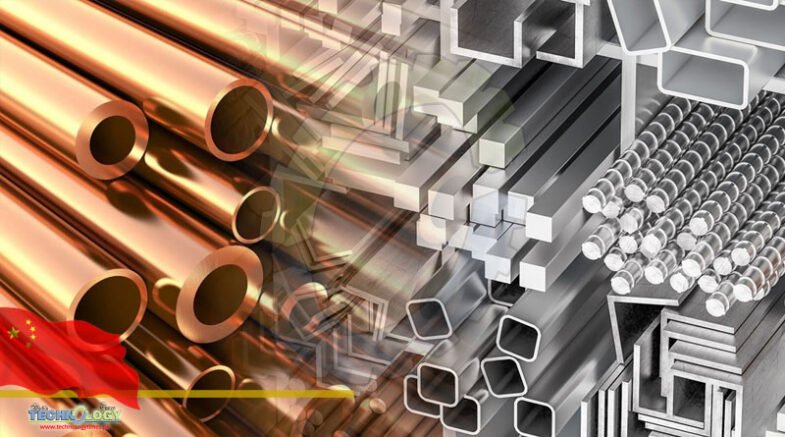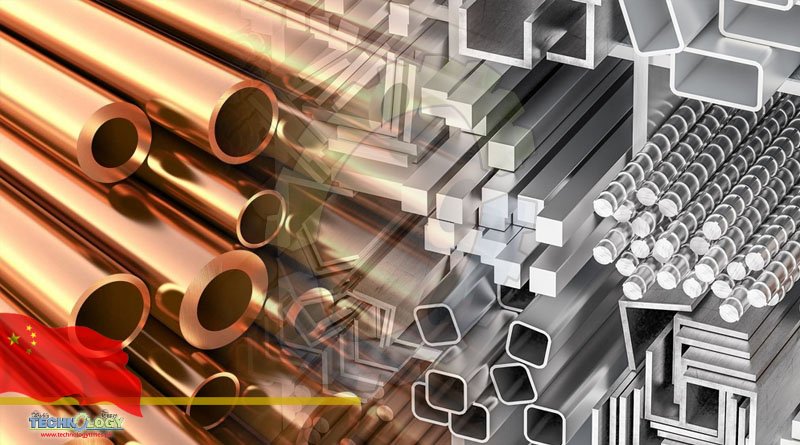China has released a plan to advance the low-carbon development of its nonferrous metals industry, a key producer of industrial carbon emissions, the Ministry of Industry and Information Technology (MIIT) said.

China has released a plan to advance the low-carbon development of its nonferrous metals’ industry, a key producer of industrial carbon emissions, the Ministry of Industry and Information Technology (MIIT) said.
Significant improvements will be made to the sector’s industrial and energy consumption structure before 2025, according to the plan jointly unveiled by the MIIT, the National Development and Reform Commission, and the Ministry of Ecology and Environment.
During the 14th Five-Year Plan period (2021-25), notable progress will be made in the research and development and application of low-carbon-emissions technologies, with recycled metals accounting for over 24 percent of the total supply of nonferrous metals in the country.
An industrial system featuring green, low-carbon and circular development will be established in the sector during the 15th Five-Year Plan period (2026-30), the document said.
Efforts will go into adjusting the industrial structure of the sector, advancing energy-saving and low-carbon technologies, promoting the use of clean energy alternatives, and building a green manufacturing system, according to the plan.
China has announced that it will peak carbon dioxide emissions by 2030 and achieve carbon neutrality by 2060.
In the low-carbon energy transformation sector, an outline from China’s Ministry of Science and Technology in August vowed to improve the self-innovation of energy techniques to accelerate the replacement of fossil energy by 2030.
Techniques should be deployed by 2030 to reduce carbon dioxide emissions in a number of energy-intensive, high-emitting industries including steel, concrete, chemical engineering and nonferrous metals.
In metallurgy, non-ferrous metals are metals or alloys that do not contain iron (allotropes of iron, ferrite, and so on) in appreciable amounts, generally nonferrous metals are more costly than ferrous metals.
Nonferrous metals are used because of desirable properties such as low weight (e.g. aluminium), higher conductivity (e.g. copper), non-magnetic properties or resistance to corrosion (e.g. zinc). Some nonferrous materials are also used in the iron and steel industries. For example, bauxite is used as flux for blast furnaces, while others such as wolframite, pyrolusite, and chromite are used in making ferrous alloys.
Important nonferrous metals include aluminium, copper, lead, tin, titanium, and zinc, and alloys such as brass. Precious metals such as gold, silver, and platinum and exotic or rare metals such as mercury, tungsten, beryllium, bismuth, cerium, cadmium, niobium, indium, gallium, germanium, lithium, selenium, tantalum, tellurium, vanadium, and zirconium are also nonferrous. They are usually obtained through minerals such as sulfides, carbonates, and silicates. Nonferrous metals are usually refined through electrolysis.
Due to their extensive use, nonferrous scrap metals are usually recycled. The secondary materials in scrap are vital to the metallurgy industry, as the production of new metals often needs them. Some recycling facilities re-smelt and recast nonferrous materials; the dross is collected and stored onsite while the metal fumes are filtered and collected. Nonferrous scrap metals are sourced from industrial scrap materials, particle emissions and obsolete technology (for example, copper cables) scrap.
Originally published at Global Times
